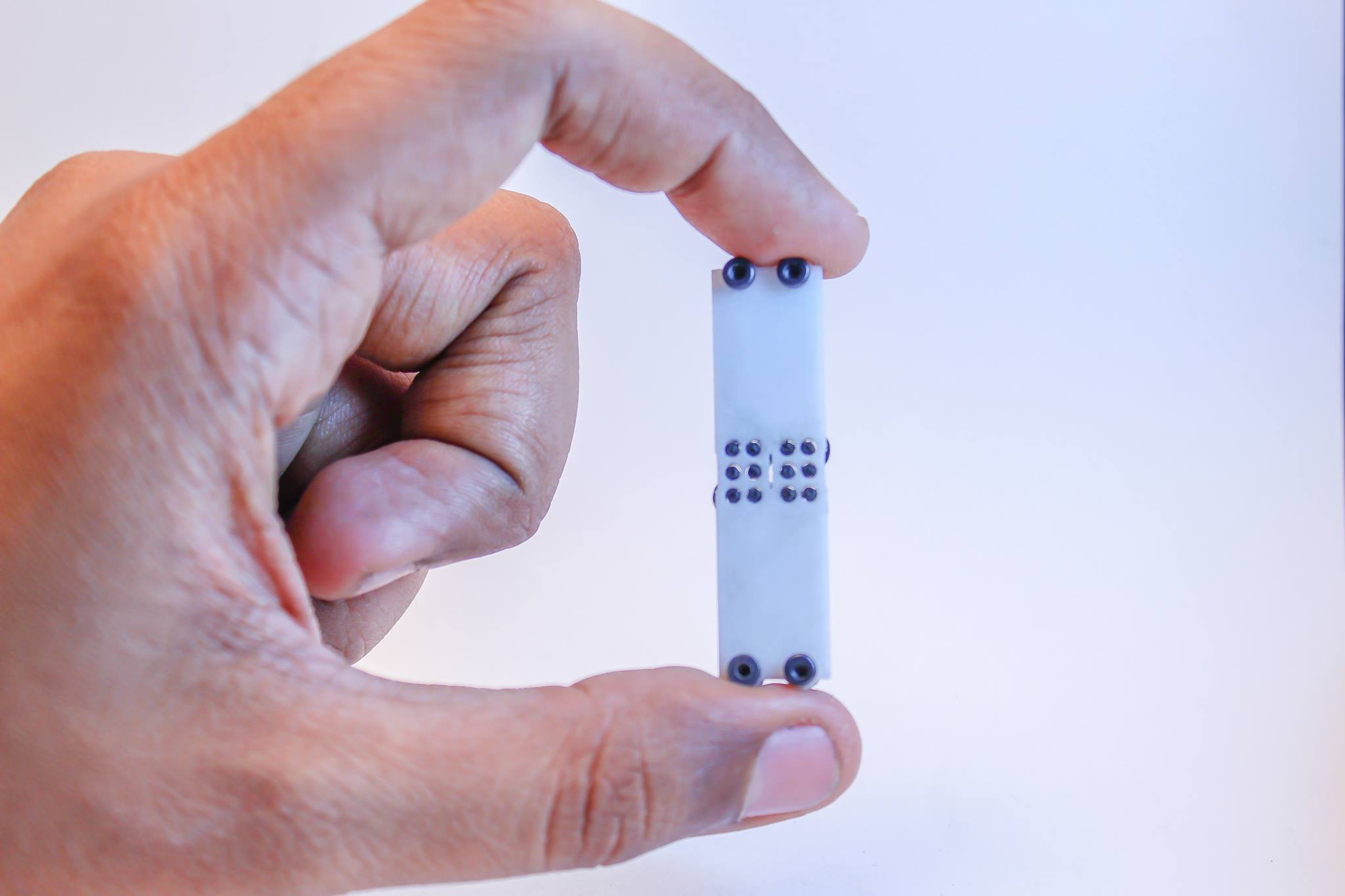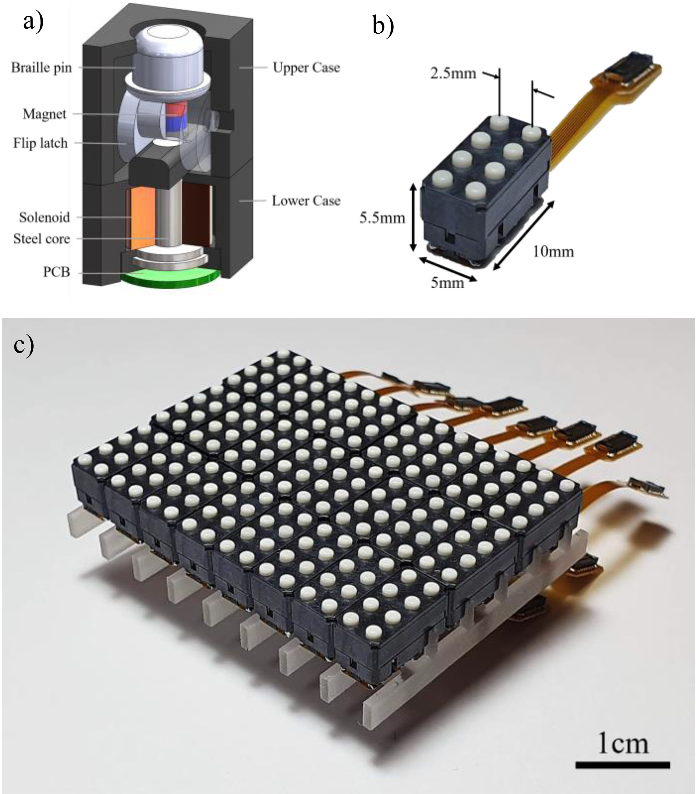This project is derived from years of work and research done by scientists and engineers over there years and is in no way "novel". Indigenous production of refreshable braille devices is essential to have this technology accessible to visually impaired communities in all countries without relying on imports and duties on already expensive devices. My goal in working on Braille Displays is not only to create a working device but to do so in a way in which it can be indigenously produced without needing a complex supply chain and assembly process.
I started working on refreshable braille displays almost 10 years ago when I was introduced to the problem statement by professors from the MIT Media Lab.
in 2016 after talking to Paul D'Souza and learning about his amazing braille projects, I started working on a refreshable braille display design derived from his idea to use micro-vibration motors.
https://hackaday.io/project/10849-refreshable-braille-display


Chris Ulbi, doing his Masters's Thesis at the time took the design further to create a working prototype
The current design is inspired by the work of Joonyeong Kim et al.: "Braille Display for Portable Device Using Flip-Latch Structured Electromagnetic Actuator"

The design was changed with the intention to have all parts 3D Printable and overcoming some of the challenges in the design:
- Interference of magnets with each other.
- A drive system adapted from Flip Dot displays to keep the electronics low cost and improve the refresh rate.
- Prevent the action of gravity causing the pins to fall out when used in other orientations.
- Redesign coil and coiling procedure to lower the cost of the electromagnet.
Other References:
MOLBED 2 project, and the manufacturing processes used for winding the coils.

Paul D'Sousa and his work https://www.youtube.com/@pgdsouza/videos
M. Benali-Khoudja, M. Hafez, and A. Kheddar, “VITAL: An electromagnetic integrated tactile display,” Displays, vol. 28, no. 3, pp. 133–144, 2007.
F. S. Cooper, "Research on reading machines for the blind" in Blindness Modern Approaches to the Unseen Environment, N. J., Princeton:Princeton University Press, pp. 512-543, 1950
H. Freiberger and E. F. Murphy, "Reading machines for the blind", IRE Trans. on Human Factors in Electronics, vol. HFE-2, pp. 8-19, March 1961.
Mohamed Benali-Khoudja, Moustapha Hafez, Jean-Marc Alexandre, and Abderrahmane Kheddar "Tactile interfaces: a state-of-the-art survey" SR 2004, 35th International Symposium on Robotics, 23-26 March, Paris France
M. Benali-Khoudja "Electromagnetically driven high-density tactile interface based on a multi-layer approach" November 2003 DOI:10.1109/MHS.2003.1249924 IEEE Xplore
T. Völkel, G. Weber, and U. Baumann, “Tactile graphics revised: The novel BrailleDis 9000 pin-matrix device with multitouch input,” in In International Conference on Computers for Handicapped Persons, 2008,
 Vijay
Vijay
Discussions
Become a Hackaday.io Member
Create an account to leave a comment. Already have an account? Log In.
I had a technical question : In the beginning when the magnets south face is facing the solenoid coil and north side is facing upwards, we activate the solenoid coil by sending a current in the clockwise direction and this results in the magnet being repelled and the cam flipping. Now in this new state the faces of the magnet have flipped and the north side of the magnet is facing the solenoid coil and the south side is facing upwards, now if we activate the coil again by sending the current in the same clockwise direction as before, wouldn't the magnet get attracted to the coil and try to move downwards (as this time the north face of the magnet is facing and not the south face) instead of getting repelled ? Why does the magnet in both cases get repelled if the faces facing the solenoid coil are different in both the cases ?
Are you sure? yes | no
That's because we can change the direction of the current of the solenoid, and this is why we can flip and reverse the magnet. This is the same way that Flipkart dot displays work, look into their functionality for clarity.
Are you sure? yes | no
I see , that's interesting. How did you change the direction of the current ?? What kind of logical circuit did you use to flip the current.
Are you sure? yes | no